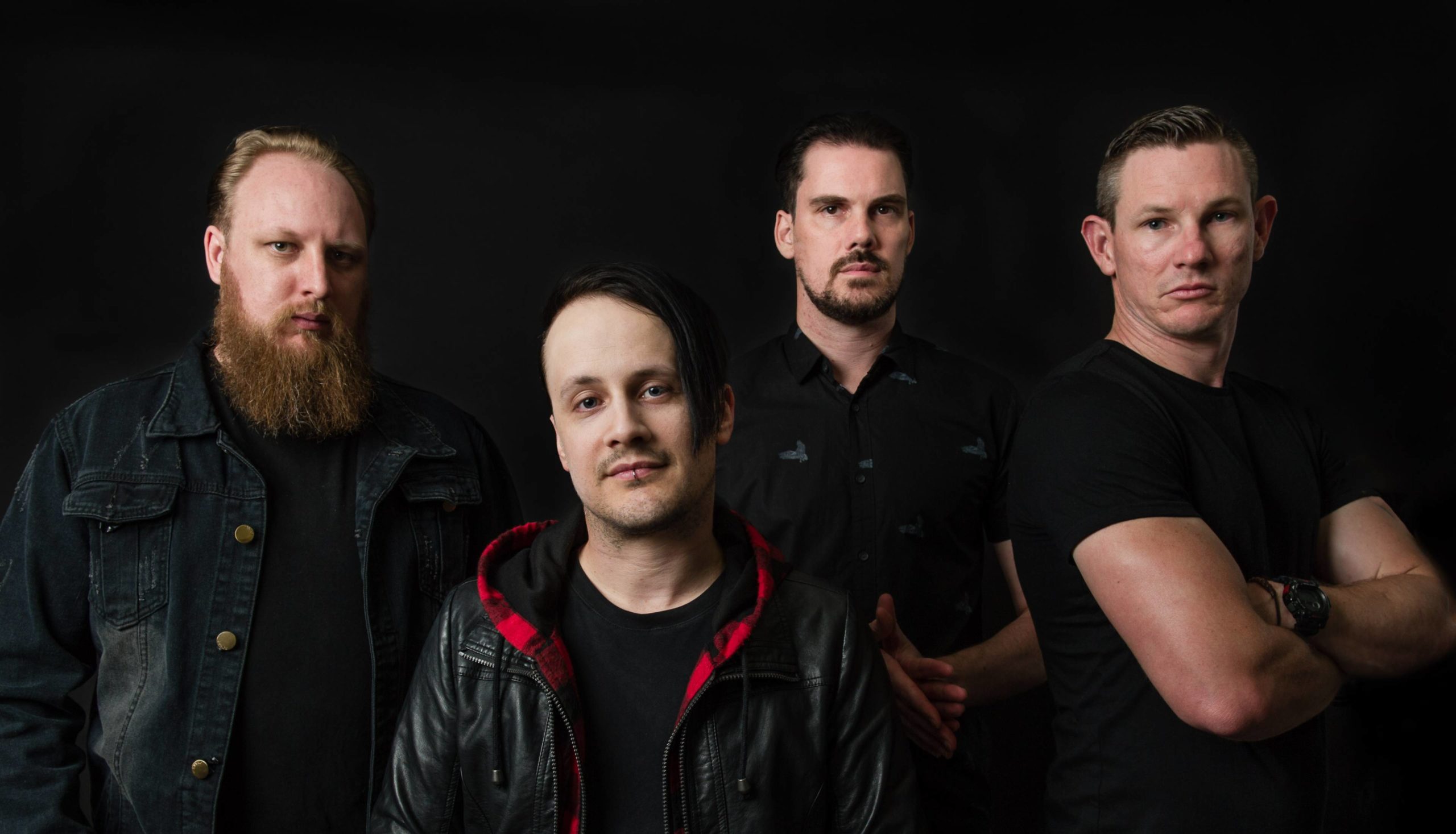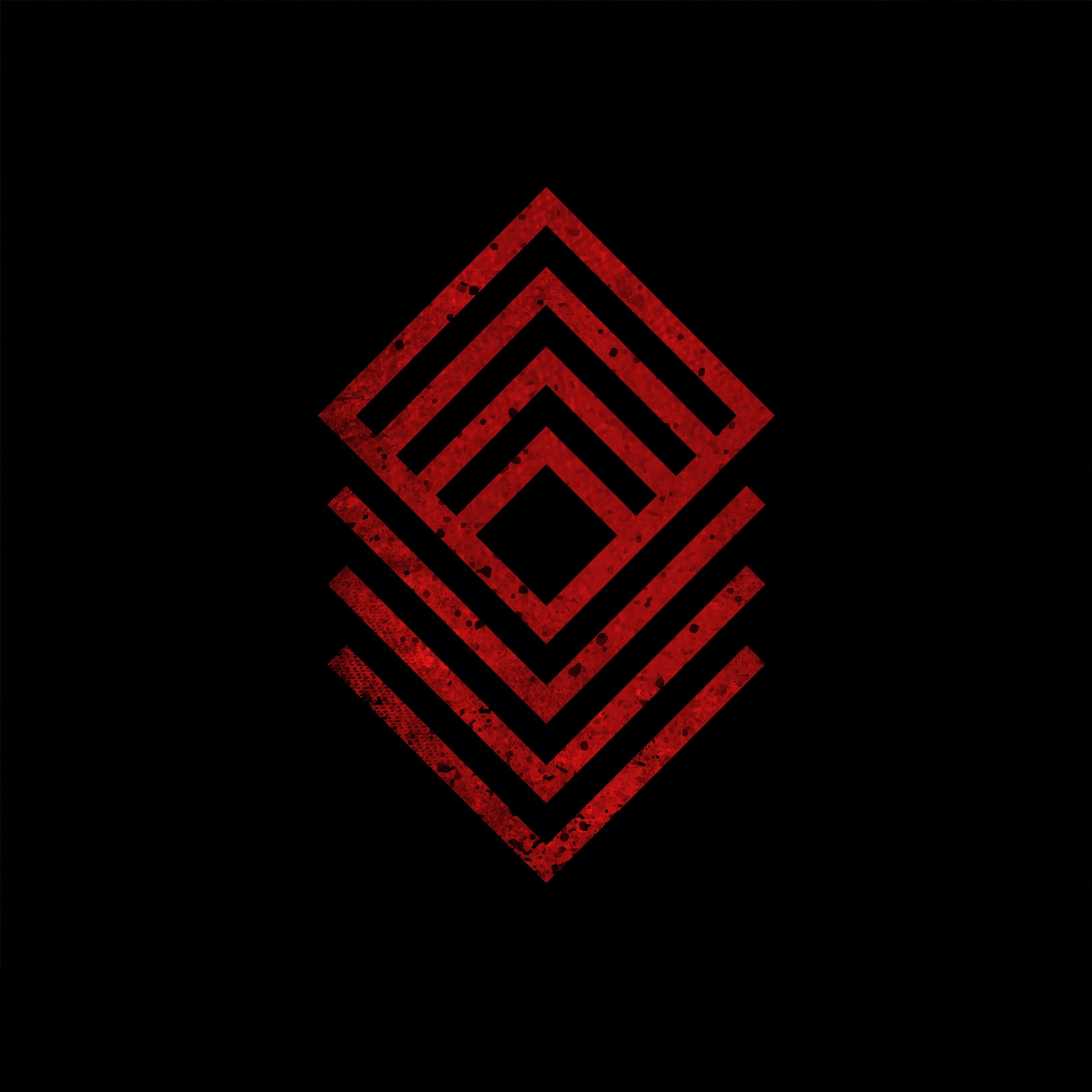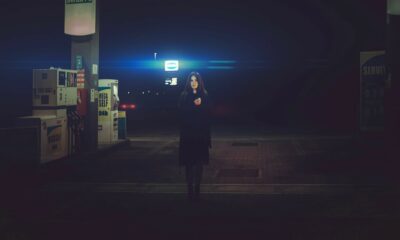Alternative/Rock
These Four Walls Return with Their Hard-Hitting New Album ‘This Is Not a Future’ [Premiere]

If you’re sick of seeing the four walls of your home office or bedroom, well, then it’s time to break out! Thankfully, today, we’ve got just the ticket, the debut of the brand-new album, This Is Not a Future, from Australian rockers These Four Walls. For their third studio record, the Aussie-by-way-of-New Zealand quartet has pulled out all the stops for their fans, the same fans to whom they owe a huge debt for helping to make this album happen. With six songs recorded, the group had a decision to make; either release them as an EP, or look to other funding sources in order to record the rest. So they opened things up to their fans, began the campaign and the result was overwhelming with the crowdfunding target being achieved in only five days!
The validation the band received from their fans offered them even more motivation to put out their best material yet, so they enlisted the help of Dead Letter Circus guitarist Luke Palmer and also once more worked with veteran producer and engineer Matt Bartlem to deliver the goods! The assets and experience brought forth by both Palmer and Bartlem resulted in thirteen new songs, including the newest single “CHAOS,” which is most notable for showcasing just how much TFW’s songwriting has come since they delivered 2012’s Living To Write The End, their last proper full-length.
To coincide with the premiere of This Is Not a Future, we spoke with lead guitarist Gray Vickers about the album, what’s changed in the last eight years, and working with Luke Palmer.
So it’s been eight years since you released an album and, obviously, a lot has changed in that time. What helped you in rekindling the songwriting juices and set out to write This Is Not a Future?
Gray Vickers: “I don’t think it was a case of the juices running dry at any point, over the last four or so years, we amassed something like over 130 part song/full song ideas. It was more that logistics and life kept pulling us all in different directions and figuring out how to best get the new material out into the world took us down a few side alleys! The whole journey really felt like waves of creativity and productivity mixed in with the chaos of life.”
How would you say your music has changed now with This Is Not a Future compared to the band’s previous work? What is the most notable difference for you?
“It’s funny because, ultimately, it’s still our voices (actual voices and musical voices), but the process is day and night. Previously it was incredibly rigid, either myself or Steve would record a blueprint song to pretty much completion, then it would be taken into the jam room to tidy up the individual pieces before being taken to the producer. It wasn’t super collaborative, there wasn’t a lot of jamming, and there wasn’t a lot of experimentation.
This time around, the less we could get done on home demos the better, it was always much more productive to just bring a single riff or idea into the jam space, and everyone got a chance to rip it apart and put it back together. There was a lot more tinkering at an individual level and much more trial and error. The results of that change in process really feels much more evolved and matured. We really opened ourselves to a ‘best idea wins’ approach that ultimately benefits the songs. What makes me super proud is that every song is riddled with our own personal touches and there’s so much more diversity in the music as a result of that.”

Artwork for ‘This Is Not a Future’ by These Four Walls
It’s always interesting to hear what it was like for bands who haven’t recorded together in a while, what it was like when the process first began to take shape; So, I’ll ask, what was it like when you first got in that room together and began collaborating again?
“This project started properly in about 2016 as a conceptual EP, which was eventually scrapped and we moved towards the idea of just recording and releasing singles. That’s when we released ‘Bravery,’ and the success we found on the back of that validated that strategy quite a bit so we followed it some more, but felt again that life and logistics just didn’t align that way for us. So we went back to the idea of an EP (although, not a singular conceptual piece this time) and we found ourselves sitting there with six tracks recorded and a whole bunch of great extra pieces we hadn’t completed yet and decided, fuck it, this has to be a full album. So that’s what prompted the crowdfunding campaign and the recording of the last six tracks to complete the project to what it is today.”
It’s pretty awesome that you were able to collaborate with Dead Letter Circus guitarist Luke Palmer who produced the record. How did Luke become involved and what did you find most useful about him as your producer?
“We met Luke in 2011 when we were recording Living To Write the End at Loose Stone Studios with Matt Bartlem. Luke would pop in and use studio C for his own projects, and join us for BBQ breakfast, BBQ lunch, and occasionally BBQ dinners (we ate a lot of BBQ in those nine weeks). He’s just a rad guy and we all got on like a house on fire. Fast forward almost ten years, and he’s built this massive career on his own and when we were talking to him in 2016 about the concept record he was all about what we were trying to do and offered his services.
The idea that we could work with a guy who’s not just a great songwriter, but a phenomenal guitar player as well was super interesting to me. He brought a lot of positive energy to the record and was so challenging, to me especially, about what I was playing, why I was playing it, and what else could I try there. His musical brain is remarkable and his ideas really encouraged us to challenge everything and push for the best versions that we had in us.”
This Is Not a Future is a heavy phrase that hints at some type of theme or concept. Is there a greater theme behind the album or am I reading too much into it?
“Well, if we look back at what the original concept EP was about, we almost came full circle on the whole thing. Originally, it was a story about what happens when a meteor is about to hit earth, we know we can’t do anything, and we know the end is right there. What was fascinating was that it allowed us to really look at what the world and the people in it would be like in that scenario.
Ultimately, we scrapped that idea, but thematically a lot of it still remained in there. The next ingredient was Steve really finding a way to bring his personal stories to the table, and draw from a lot of pain and sadness that has been existing in our lives for the last few years. The whole thing paints a pretty grim picture, but with Walls it’s always been about finding the positive, the light at the end of the tunnel.
To me, This is Not a Future really means that there’s so much more out there than we’re letting in, that we can be so much better as individuals, as people, and the way things are going isn’t the way forward. Then obviously, a fucking pandemic hits the world and everything we knew is upside and now all of a sudden, we’ve released a record that really hits home with a lot of people for very new reasons!”
-

 Alternative/Rock7 days ago
Alternative/Rock7 days agoThe Warning Shake the Foundations of a Sold-Out Leeds Stylus [Photos]
-

 Alternative/Rock7 hours ago
Alternative/Rock7 hours agoThe Cruel Knives Headline Top Night of British Rock at Manchester’s The Lodge [Photos]
-

 Music2 weeks ago
Music2 weeks agoTake That (w/ Olly Murs) Kick Off Four-Night Leeds Stint with Hit-Laden Spectacular [Photos]
-

 Alternative/Rock7 days ago
Alternative/Rock7 days agoThe V13 Fix #011 w/ Microwave, Full Of Hell, Cold Years and more
-

 Features2 weeks ago
Features2 weeks agoTour Diary: Gen & The Degenerates Party Their Way Across America
-

 Indie7 days ago
Indie7 days agoDeadset Premiere Music Video for Addiction-Inspired “Heavy Eyes” Single
-

 Folk1 week ago
Folk1 week agoKatherine Perkins Strikes the Right Tone with Her “Hold On” Music Video Premiere
-

 Country1 week ago
Country1 week agoBrooke Ashton Chats About Her “Someone” Single, Creative Process, and More!












